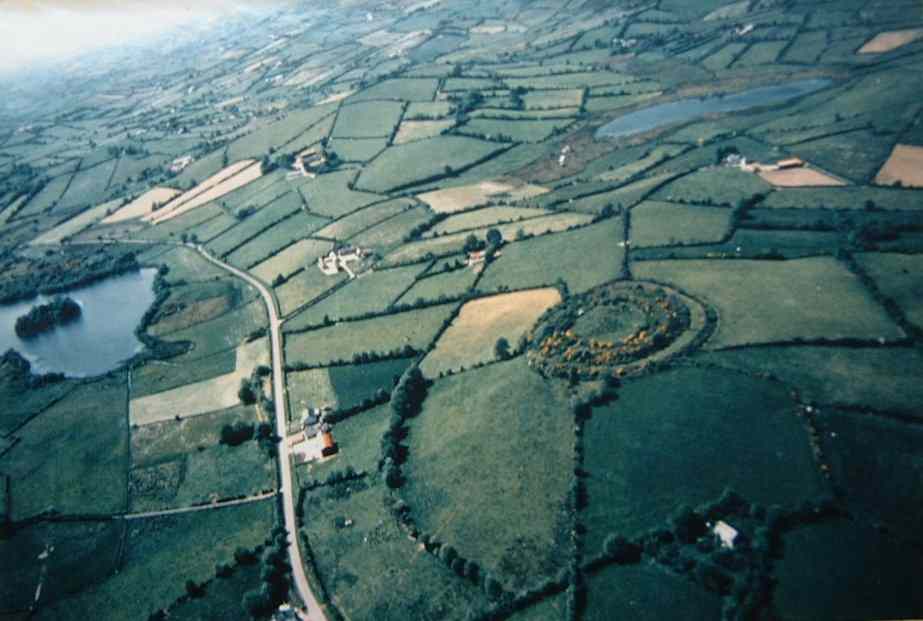

 |
Ring-Forts Early medieval Irish settlement was generally rural. Until the foundation of Viking trading ports in the ninth and tenth centuries the only settlements which carried out the functions of urban communities were the larger monasteries. Ring-forts, or Raths, were enclosed homesteads and the most common field monument in Ireland. There are well over 30,000 shown on the ordnance survey maps, although in recent years many have been damaged or destroyed for agricultural or commercial reasons. They consisted of a circular earthwork varying from 50ft to over 200ft in diameter and occasionally, as here at Lisleitrim, with were two or even three concentric rings. The interior is sometimes sited on a natural or artificial mound. There may also be a souterrain, a subterranean passage or space used probably for storage. While ring-forts are not truly forts in a military sense, they were clearly intended to enclose homesteads and agricultural sites. Their origins are highly debated but it is quite probable that they formed a continuous settlement tradition form the late Neolithic or early Bronze Age onward, and some continued to be occupied as late the 17th century. Most ring-forts served as enclosures for domestic animals and protection against wild predators as well as a deterrent to attack from human beings. The smaller enclosures would have accommodated a single family with its farm animals and out buildings and the earthworks would have given protection for the animals during the frequent inter-family cattle raids. The larger enclosures could well have accommodated family kindred groups that formed the basic unit of early Irish society. Crannogs A crannóg is a dwelling built in a lake or bog, either on stilts or on a man-made island. The name is derived from the Irish word crann, meaning a tree. Originally the term may have been applied to the timber palisades which surrounded such sites, the timber buildings within them, or the timber foundations on which they were erected. The earliest known crannogs date back to the late bronze age, and the construction of crannogs was recorded in Fermanagh as late as the 1500s. They played an important part in the Nine Year War, as Gaelic chiefs abandoned their stone castles and stored their military supplies in remote crannogs. Crannogs are found all over Ireland. People chose to build this way for a number of reasons; safety and wise use of arable land being presumably top of the list. |
